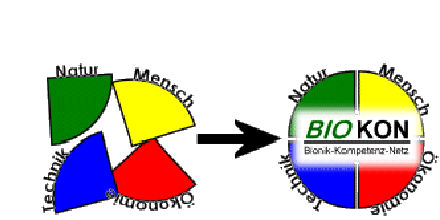
BIOKON – Bionics
 Bionics is the science of cooperation
Bionics is the science of cooperation
What is bionics?
The word bionics is made up of the two words biology and electronics. In German, however, the second part comes from ‘Technik’, which means engineering in this context. This approach of combining biology and engineering is often also called biomimetics in English and we use these two expressions more or less synonymously.
Deciphering ‘inventions of nature’ andtransfering them into technological innovations.
The interdisciplinary field of bionics is about scrutinizing and transferring ‘natural inventions’ into technical applications. In the course of evolution, nature has developed, improved and tested these inventions over millions of years. In a first step, the optimized solutions to a specific set of problems have to be thoroughly analyzed. In a second step, the newly described solutions can be implemented in technical applications with corresponding boundary conditions. This does not imply an exact copy of nature, which would not work in most cases. Rather, bionics tries to elaborate the basic principles so that they can be abstracted or detached from the biological model. Subsequently, the abstractions are transferred into technical applications. This is why the dialogue between biologists and engineers is probably the most crucial factor for a successful and efficient implementation of biological answers to engineering problems.
Bionics is therefore not a means of producing blueprints for engineering, but thrives on the exchange between experts of various disciplines. During everyday work, the boundaries between different disciplines are commonly crossed in a very interdisciplinary way. Thus, new disciplines and fields of expertise can emerge, e.g.
– Structural bionics – constructions of nature
– Processing bionics: methods and processes of nature
– Information bionics – means of data transfer, developmental, and evolutionary strategies
Once the biological solutions are known and the abstracted principles are well-communicated, the possible technical applications are manifold and cannot be foreseen. The self-cleaning effect of the lotus flower (Lotus-Effect®), for example, can be applied to things as diverse as wall paints, roof tiles, and textiles. The potential for innovations is enormous – a fact, which is being more and more recognized by companies and decision-makers.
